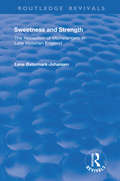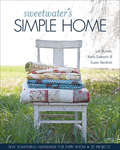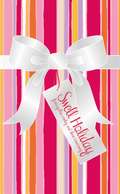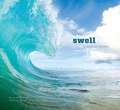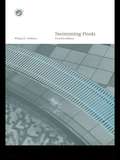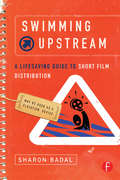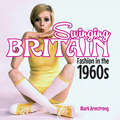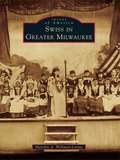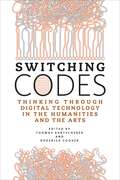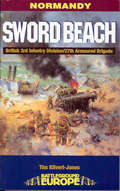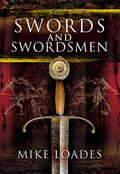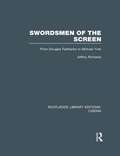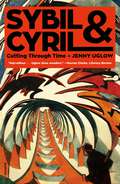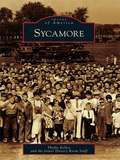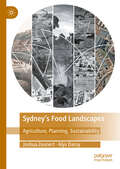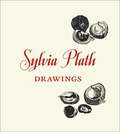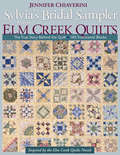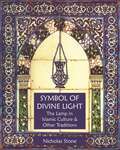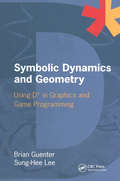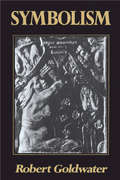- Table View
- List View
Sweetness and Strength: The Reception of Michelangelo in Late Victorian England (Routledge Revivals)
by Lene Østermark-JohansenFirst published in 1998, this volume explores the reinvention of Michelangelo in the Victorian era. At the opening of the nineteenth century, Michelangelo’s reputation rested on the evidence of contemporary adulation recorded by Vasari and Condivi. Travel, photography, the shift of his drawings into public collections, and, in particular, the publication of his poems in their original form, transformed this situation. The complexity of his work commanded new attention and several biographies were published. As public curiosity and knowledge of the artist increased, so various groups began to ally themselves to aspects of Michelangelo’s persona. His Renaissance reputation as a towering genius, a man of great spiritual courage, who had journeyed through and for his art to the depths of despair, was important to the Pre-Raphaelites and other artists. His love for his own ‘Dark Lady’, Vittoria Colonna, aroused excited speculation among High Church advocates, who celebrated his friendship with the deeply religious woman-poet; and the emerging awareness that some half of his love poetry was dedicated to a younger man, Tommaso de’ Cavalieri, was of intense interest to the aestheticists, among them Oscar Wilde, Walter Pater and J.A. Symonds, who sought heroic figures from societies where masculinity was less rigorously defined. In this original and beautifully illustrated study, Lene Østermark-Johansen shows how the critical discussion of the artist’s genius and work became irretrievably bound up in contemporary debates about art, religion and gender and how the Romantic view of art and criticism as self-expression turned the focus from the work of art to the artist himself such that the two could never again be viewed in isolation.
Sweetwater's Simple Home: Sew Something Handmade for Every Room, 35 Projects
by Lisa Burnett Karla Eisenach Susan Kendrick&“Sweetwater&’s simple style shines through . . . from a laundry hamper to a covered office chair and quilts for the nursery or the master bedroom.&” —Quilts & More A house becomes a home with handmade touches added to every room. With inspiring designs from the mother-daughter trio behind Sweetwater, it&’s easy to add expressive touches everywhere, from the dining room to the bedroom to the laundry room. Keep it simple and surround yourself with things you absolutely love. 35 beginner-friendly projects, including quilts, pillows, table linens, and accessories—many can be made in a day or lessFresh, modern ideas for making things pretty and practicalBring Sweetwater&’s popular signature style to all your sewing and craft projectsLearn simple, creative techniques for decorating with appliqué, stenciling, stamping, and embroidery&“[A] lovely, lovely book. Actually, even though the projects are all fairly straightforward it&’s one of the nicest quilting books I&’ve looked at in a long while and the photos are fabulous . . . My favorites were the scalloped placemats, the lampshade, the work chair slipcover, tray liner, and some of the bags. All of these are straightforward enough for any beginner, but even for someone whose been sewing as long as I have they would make great additions to brighten up the home.&” —Run Quilt Knit Write&“If you like simple projects with a modern approach, a few (or a lot) of projects in this book will appeal to you . . . All of these projects are &‘beginner-friendly,&’ which is nice for beginners but also nice for those among us who are looking for a fast project (need a quick gift?).&” —Portland Modern Quilt Guild
Swell Holiday
by Cynthia Rowley Ilene RosenzweigEvery day's a holiday in Swellville. But December is the swellest time of all. Coauthors of the breakthrough style manuals, Swell: A Girl's Guide to the Good Life and Home Swell Home: Designing Your Dream Pad, Cynthia and Ilene now bring their signature mix of spirit and style to holiday time. So come on in, brush the snow off your boots, and knock back some chick nog. The Swell girls have been shopping for ideas all year and have their stockings full of ways to rev up the revelry, redeck the halls, and spruce up your holiday look without resorting to reindeer sweaters. No elves required! The girls wrap it all up and tie it with a loopy bow. And if you don't like it, you can always return it.
Swell: A Year of Waves
by Evan Slater&“Not only a gorgeously photographed guide to the best waves in the world but a lucid introduction to the science behind them.&” —The Wall Street Journal Wave watchers around the world know that no two waves are the same. Yet each and every wave that rises, peaks, and crashes onto the beach is generated by a much larger force originating thousands of miles away. Surf journalist team Evan Slater and Peter Taras capture the essence of waves and the swells that produce them in this breathtaking collection of wave photography. Slater characterizes four distinct swells from different corners of the globe and traces their journeys throughout the year from storm to seashore. His reflective, informative essays amplify these powerful images of hundreds of waves frozen in time, beautiful, simple, universal, yet wholly unique—and the best thing to watch on the planet.
Swimming Pools: Design and Construction, Fourth Edition
by Philip H. PerkinsThe fourth edition of this classic book provides a comprehensive treatise on the design and construction of swimming pools, both public and private. Significantly revised, it covers planning, materials, design, construction and finishing, water circulation and treatment, energy conservation, maintenance and repairs. This is a standard book for all
Swimming Upstream: A Lifesaving Guide To Short Film Distribution
by Sharon BadalShort films have come into their own, not least in part due to the incredible new ways to distribute them, including the Web, cell phones, new festivals devoted to shorts--even television and theatres. This is the ultimate guide for anyone who's made a short film and wonders what to do next. Whether your short film is meant to be a calling card, a segue to a feature film, or you just want to recoup some of the costs, this book describes the potential paths for distribution. Written by the short film programmer of the Tribeca Film Festival and featuring contributions from top film festival directors, as well as studio, marketing, and technology executives, this book shows you what's important to the decision makers and gatekeepers. This is the definitive handbook filled with insider information available nowhere else.
Swinging Britain: Fashion in the 1960s
by Mark ArmstrongThe 1960s is one of the most exciting fashion decades of the twentieth century,where British pop and youth culture created a stylish look that set trends all around the world. This book reveals how the 1960s British look was inspired by social changes and championed by innovative new designers like Mary Quant. Their unconventional designs spread rapidly from small fashionable boutiques on Carnaby Street to Main Street thanks, in part, to rock stars like The Who, models like Twiggy, and celebrity photographer David Bailey.From the Trade Paperback edition.
Swirling Designs Coloring Book
by Geta GramaColoring has never been this creative. Get inspired with 18 different designs you can color or draw or paint all day. Add your own flair with pens, pencils, crayons, markers or paint. Learn how colors go together and try out a new color theory today. • Keep yourself busy in the car, while waiting for friends - anywhere you go • Decorate your room, your binder, or your locker with finished pages, or give them to friends • Collect the whole series! Each book features designs by different quilt artists Swirling Designs has 18 intricate geometric patterns to color, plus fun facts on combining colors so they look good together. *Free table-top display available with purchase of 12 coloring books! (Wholesale minimum: 3 units.)
Swiss Chalet Book: An Elegant Guide to Architecture and Design
by William S DanaHere William S. B. Dana, B.S., presents an in-depth and precise depiction of the breathtaking architectural masterpieces known as the Swiss Chalets. The culmination of elaborate conversations with the designers, the builders, and the experts on these spectacular buildings, here is a piece of design history that is not to be missed.A style of German origin, Swiss Chalets were best known for their large windows, ornate carvings, and balconies. Often they were brightly painted, and had gabled roofs with great overhanging eaves. These stunning aristocratic homes decorated the Swiss countryside in the nineteenth century, and later could be seen throughout the rest of the world. New Chalets, as they were called, rose up in Norway and Sweden, and finally even crossed the Atlantic, appearing in places as unexpected as Ohio and New Jersey.Through delicate language and lines, Dana expresses both the science and the art behind the simple structural elements and the most complex details of the chalets. This book, a 1913 original, displays diagrams, architectural plans, and photographs to best convey the different fundamentals and models of Swiss Chalets. The author’s research of this beautiful art form cultivates knowledge and appreciation of this great architectural style.
Swiss in Greater Milwaukee
by Maralyn A. Wellauer-LeniusA few men and women, mostly from German-speaking cantons, pioneered this remarkable Swiss community in the mid-1830s. Thousands who followed in their footsteps participated actively in the development of a vibrant new city, branding it with a unique style of efficiency and progressivism. The immigrants and their progeny prospered and distinguished themselves in various fields of science, commerce, art, and industry. They helped launch Charlie Chaplin's career, produced coumarin used in flavorings and perfumes, wrote a popular guide for 19th-century immigrants, and helped shape the nation's banking industry. Among their finest were Milwaukee's first archbishop, a world-renowned surgeon, an elected governor, an influential radical "free-thinker," a kindergarten pioneer, a wine grower, a successful whiskey distiller, and a prolific architect.
Swissted: Vintage Rock Posters Remixed and Reimagined
by Mike Joyce&“Fine art for font nerds.&”—New York Magazine &“One of the most engaging homages I have ever seen.&”—Steven HellerSwissted takes rock concert posters of the &’70s, &’80s, and &’90s and remixes and reimagines them through a Swiss modernist lens. The result is some of the coolest images you&’ve ever seen! The book features 200 posters, all microperforated and ready to frame. Or keep them bound in one collection as an art book. The foreword is written by legendary designer Steven Heller. Posters are from legendary indie, alternative, and punk bands such as Jane&’s Addiction, Blondie, the Beastie Boys, the Clash, the Pixies, Green Day, the Ramones, Devo, the Sex Pistols, Dead Kennedys, Public Image Ltd., Sonic Youth, the Cure, Red Hot Chili Peppers, Hüsker Dü, Danzig, the Replacements, Fugazi, the Lemonheads, Pearl Jam, Pavement, Superchunk, They Might Be Giants, Guided by Voices, Sugar, Sleater Kinney, Violent Femmes, Iggy Pop, Fishbone, Nirvana, and many, many more!
Switching Codes: Thinking Through Digital Technology in the Humanities and the Arts
by Thomas Bartscherer Roderick CooverHalf a century into the digital era, the profound impact of information technology on intellectual and cultural life is universally acknowledged but still poorly understood. The sheer complexity of the technology coupled with the rapid pace of change makes it increasingly difficult to establish common ground and to promote thoughtful discussion. Responding to this challenge, Switching Codes brings together leading American and European scholars, scientists, and artists--including Charles Bernstein, Ian Foster, Bruno Latour, Alan Liu, and Richard Powers--to consider how the precipitous growth of digital information and its associated technologies are transforming the ways we think and act. Employing a wide range of forms, including essay, dialogue, short fiction, and game design, this book aims to model and foster discussion between IT specialists, who typically have scant training in the humanities or traditional arts, and scholars and artists, who often understand little about the technologies that are so radically transforming their fields. Switching Codes will be an indispensable volume for anyone seeking to understand the impact of digital technology on contemporary culture, including scientists, educators, policymakers, and artists, alike.
Sword Beach: British 3rd Division/27th Armoured Brigade (Battleground Europe)
by Tim Kilvert-JonesAs the left most inland flank of the D-Day landings, Sword Beach was thought most likely to receive the first German counterattacks. The British troops selected for the assault had the tasks of securing the beach and advancing on the heavily defended medieval town of Caen. The troops also were determined to link up with British paratroopers and glider units who had landed the night before on special missions and were not equipped to withstand an armored counterattack alone.Backed up by an impressive array of modified armored vehicles, the veteran 3rd Division, spearheaded by No. 4 Army Commando and 41 Royal Marine Commando, stormed ashore and secured its objectives with moderate casualties. No. 4 Commando also reached the airborne troops before they could be overwhelmed by German armor. However, the British failed to secure the key town of Caen on schedule.The action on this Normandy beach is now covered in all the detail that has become standard with the Battleground Europe series.
Sword and Brush: The Spirit of the Martial Arts
by Dave LowryThis moment of perfect clarity that is the force behind all the traditional Japanese arts--from archery to flower arranging--is celebrated here in Dave Lowry's exploration of the common principles shared by calligraphy and the martial arts. Forty-two examples of Lowry's calligraphy, accompanied by his essays, show how the way of the brush reflects the strategic principles of the way of the sword. Each calligraphy represents a term from the martial arts--such as do, the way, or wa, harmony. The accompanying text amplifies our understanding of the term, what it meant to Japanese warriors, and what it means to practitioners of calligraphy and the martial arts today. What becomes clear is that these two seemingly unrelated disciplines actually partake of the same profound elemental spirit.
Swords and Swordsmen
by Mike Loades&“A &‘must have&’ book for anyone who has an interest in edged weapons . . . Loades holds the reader&’s full attention with each sword&’s story that he tells.&” —The Lone Star Book Review This magnificent book tells the story of the evolution of swords, how they were made, how they were used, and the people that used them. It doesn&’t claim to give comprehensive coverage but instead takes certain surviving examples as landmarks on a fascinating journey through the history of swords. Each is selected because it can be linked to a specific individual, thus telling their story too and giving a human interest. So the journey starts with the sword of Tutankhamun and ends with the swords of J. E. B. Stuart and George Custer. Along the way we take in Henry V, Cromwell and Uesugi Kenshin, and there is the most detailed discussion you&’ll find anywhere of all of George Washington&’s swords. The chapters on these specific swords and swordsmen are alternated with more general chapters on the changing technical developments and fashions in swords and their use. The reader&’s guide on this historical tour is Mike Loades. Mike has been handling swords most of his life, as a fight arranger, stuntman and historical weapons expert for TV and stage. As much as his profound knowledge of the subject, it is his lifelong passion for swords that comes through on every page. His fascinating text is supported by a lavish wealth of images, many previously unpublished and taken specifically for this book.&“Superb . . . the most breathtaking coverage from the earliest days to modern times. Brilliant.&” —Books Monthly
Swordsmen of the Screen: From Douglas Fairbanks to Michael York (Routledge Library Editions: Cinema)
by Jeffrey RichardsThis fascinating study of the genre of swashbuckling films received wide critical acclaim when it was first published in 1977. Jeffrey Richards assesses the contributions to the genre of directors, designers and fencing masters, as well as of the stars themselves, and devotes several chapters to the principal subjects if the swashbucklers – pirates, highwaymen, cavaliers and knights. The result is to recall, however fleetingly, the golden days of the silver screen. Reviews of the original edition: ‘An intelligent, scholarly, well-written account of adventure films, this work is sensitive both to cinema history and to the literary origins of the "swashbuckler"….Essential for any library with books on film, it may very well be the definitive book on its subject.’ – Library Journal
Sybil & Cyril: Cutting Through Time
by Jenny UglowFrom Jenny Uglow, one of our most admired writers, a beautifully illustrated story of a love affair and a dynamic artistic partnership between the wars. In 1922, Cyril Power, a fifty-year-old architect, left his family to work with the twenty-four-year-old Sybil Andrews. They would be together for twenty years. Both became famous for their dynamic, modernist linocuts—streamlined, full of movement and brilliant color, summing up the hectic interwar years. Yet at the same time, they looked back to medieval myths and early music, to country ways that were disappearing from sight. Jenny Uglow’s Sybil & Cyril: Cutting Through Time traces their struggles and triumphs, conflicts and dreams, following them from Suffolk to London, from the New Forest to Vancouver Island. This is a world of futurists, surrealists, and pioneering abstraction, but also of the buzz of the new, of machines and speed, of shops and sport and dance, shining against the threat of depression and looming shadows of war.
Sycamore
by Phyllis Kelley Joiner History Room StaffThe attractions of Sycamore include its majestic 1904 county courthouse, domed Carnegie library, well-appointed Victorian homes and tree-lined streets, and flourishing central business district located on a broad main street first laid out in the mid-19th century. The 1¢ parking meters are a nice touch too. This DeKalb County seat retains the charming appearance of a fictional midwestern "small-town USA." Now known far and wide for its annual pumpkinfestival in October, Sycamore has a rich historical past. In Sycamore, readers will discover people, businesses, organizations, and events that contributed to this community becoming a place where the slogan "Life Offers More in Sycamore" was a natural.
Sydney’s Food Landscapes: Agriculture, Planning, Sustainability
by Joshua Zeunert Alys DaroyThe story of Sydney’s metropolitan food landscapes is one of dramatic transformations of First Nations land amidst jostles for power and wealth. This book unearths Sydney's lost commercial agriculture since colonisation in 1788 to assess its fragile food futures. Richly illustrated, 270 images are encapsulated within 110 figures, including an array of original metropolitan-scale mappings. Discussion traverses the city’s diverse cultural influences, from Indigenous land management to British pastoralism, Chinese cultivation of Sydney’s “backyard vegetable garden” and southern European farming spawning billion-dollar empires. The region has further been shaped by a vast array of cultural and ideological factors and material practices, with relevance to planning, policy, ethics, geography, heritage, art, design and technology. This book is the first to bring Sydney’s disparate post-colonial food histories together in one volume to explore the dynamics and tensions between urban growth and food production. The relevance of Sydney’s food landscapes therefore extends far wider than the city itself, with implications for countless regions worldwide in a time of increasing climate and resource precarity.
Sykesville
by Bill HallA picturesque, little town located along the banks of the rolling Patapsco River, Sykesville, Maryland has had a long and distinctive history. Though not officially incorporated until 1904, Sykesville was first put on the map when, in 1831, the mighty Baltimore and Ohio Railroad sent its "Old Main Line" from the thriving metropolis of Baltimore to Point of Rocks in Frederick County, Maryland and traveled through the small town of Sykesville on its route. After that, tourism became an important industry in the town, as well-to-do Baltimoreans searched for a country refuge during the hot summer months. Sykesville, located in Carroll County and just 30 miles from Baltimore city, was the perfect spot to enjoy a relaxed and shady holiday.As Sykesville grew and changed over the years, many individuals, including Suzannah Warfield, Frank Brown, Wade Warfield, J.H. Fowble, E. Francis Baldwin, and Edwin Mellor, played important roles in the town's commercial development. But it is Sykesville's unique heritage, the great value placed on preserving that past by residents, and the resilient character of the community that has made Sykesville what it is today. Following a decline in the 1970s, the town experienced a rebirth fostered by the tenacious spirit of local officials and residents who strongly believed that the town could regain its past glory. Now, as one strolls along Sykesville's downtown streets, the past seems once again alive and the community's singular story is at the heart of it all.
Sylvia Plath: Drawings
by Sylvia PlathIn 1956 Sylvia Plath wrote to her mother, Aurelia, 'I feel I'm developing a kind of primitive style of my own which I am very fond of. Wait 'til you see . . . 'Throughout her life Plath cited art as her deepest source of inspiration; yet while her writing is celebrated around the world, her drawings are little known. This publication brings together drawings from 1955 to 1957, the period she spent on a Fulbright fellowship at Newnham College, Cambridge. During this time she met and married in secret the poet Ted Hughes, travelling with him on honeymoon to Paris and Spain before their return to the US in June 1957. Plath's drawings in pen and ink are exquisitely observed moments from this period in her life, and include among their subjects Parisian rooftops, trees, churches and a portrait of Ted Hughes. The collection sheds light on these key years in Plath's life and includes letters and a diary entry about her art, as well as an illuminating introduction by her daughter, Frieda Hughes.
Sylvia's Bridal Sampler from Elm Creek Quilts: The True Story Behind the Quilt—140 Traditional Blocks
by Jennifer ChiaveriniThe New York Times–bestselling author of the Elm Creek Quilts Novels shares 140 block patterns so you can make your own version of this heirloom quilt! Celebrate the enduring bonds of friendship and create your own authentic version of the &“secret&” bridal sampler from the beloved novel The Master Quilter. Get together with other quilters to mix, match, and share 140 traditional blocks. Enjoy the gallery of sampler quilts made by other Elm Creek readers. This book includes complete instructions and links to full-sized patterns for every block from the sampler.
Symbol of Divine Light: The Lamp in Islamic Culture and Other Traditions
by Nicholas StoneSymbol of Divine Light surveys the history of the mosque lamp, describing the numerous variants made in different historical periods and containing more than 200 stunning color and b/w illustrations. The deep significance of light and the lamp in Islamic culture and other traditions—Jewish, Christian, Zoroastrian, Hindu, and Buddhist—is also explored, with reference made to the writings of authors belonging to the &“Traditionalist school,&” notably Frithjof Schuon, René Guénon, Titus Burckhardt, and Martin Lings. The book presents a detailed exploration of the famous Koranic Verse of Light and the symbolism of its constituent elements: light, the niche, the lamp, glass, oil, and the tree. Parallels are also drawn with other traditions, indicating a universal symbolism.Symbol of Divine Light concludes that the most important function of the mosque lamp was as a symbolic reminder of the Verse of Light, as demonstrated by examples that were virtually non-functional as lighting devices and also the extensive use of the mosque lamp as a decorative motif in Islamic architecture. The book aims to give the reader an opportunity to contemplate the meaning of the mosque lamp as a symbol of Divine Light.
Symbolic Dynamics and Geometry: Using D* in Graphics and Game Programming
by Brian Guenter Sung-Hee LeeThis book explains how to use the symbolic differentiation system D* for applications in computer games and engineering simulation. The authors describe how to create procedural 3D geometric models, link them together to form multibody physical systems, and simulate and display their physical behavior in real time. The symbolic differentiation capabilities of D* can be used in a wide variety of technical applications, including computer graphics, engineering, and mechanical simulation. Two Lagrangian physics simulation and procedural 3D geometric modeling are developed in great detail.
Symbolism
by Robert GoldwaterThis encyclopedic guide explores the rich and varied meanings of more than 2,000 symbols?from amethyst to Zodiac.
